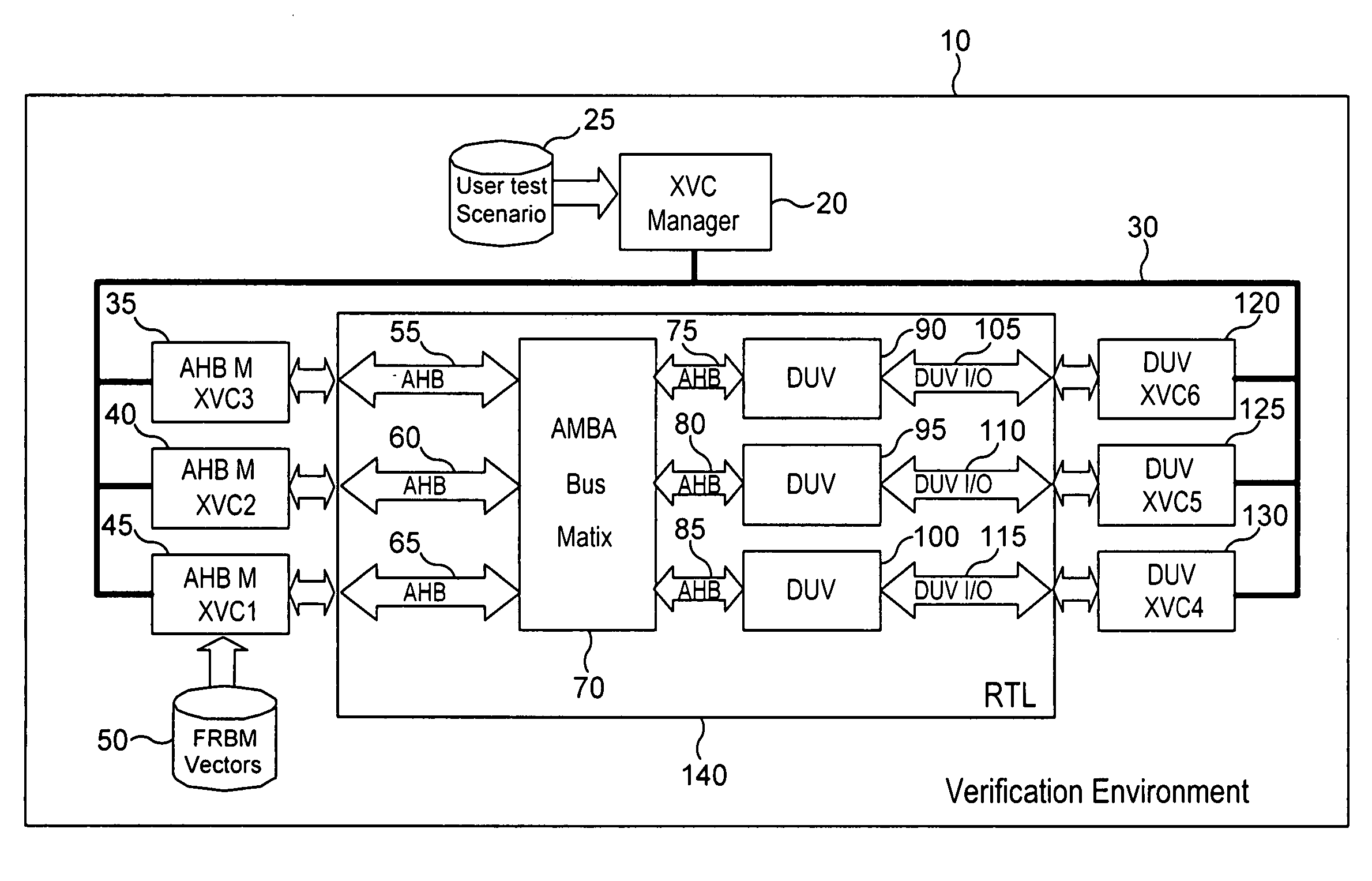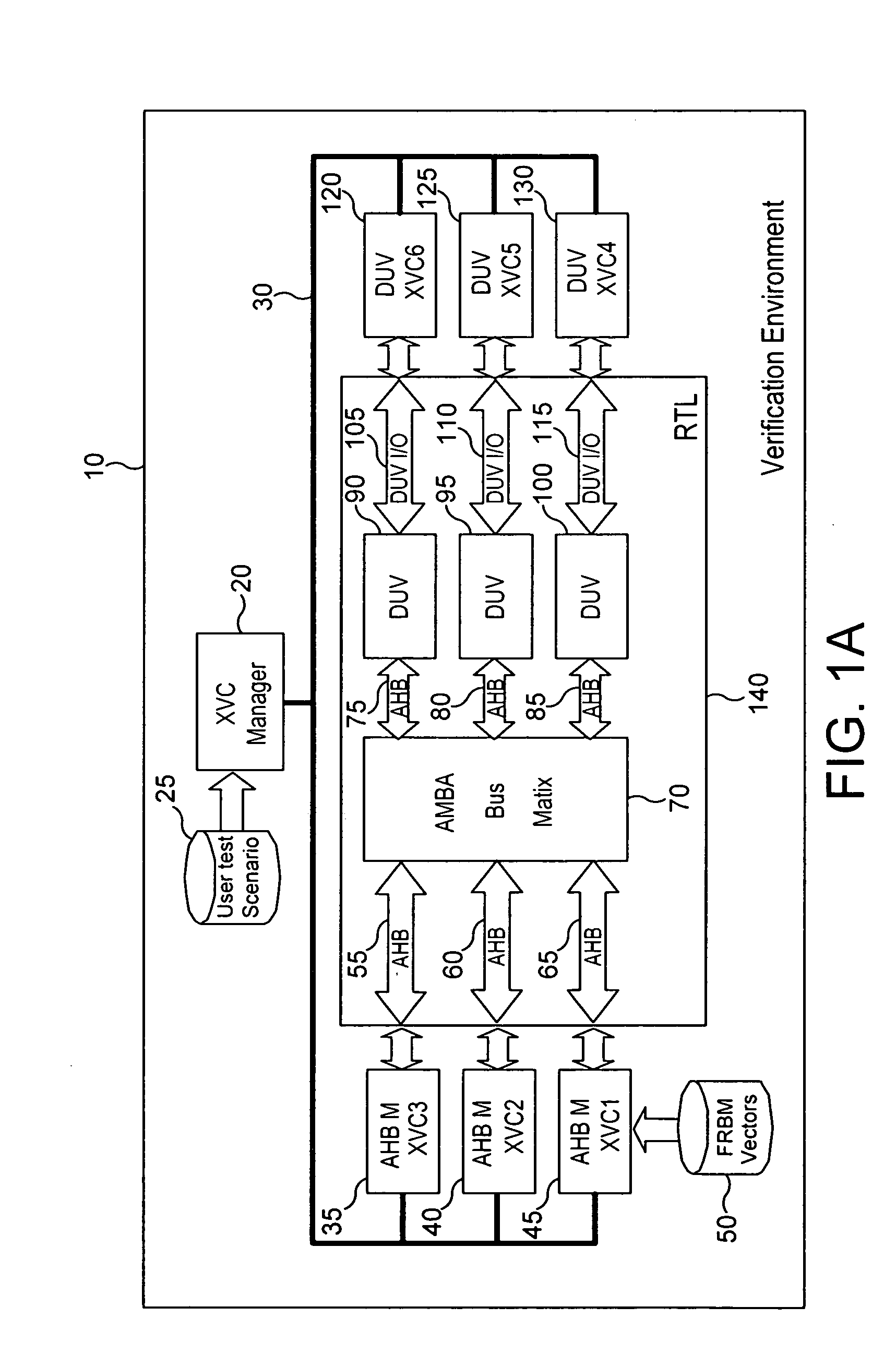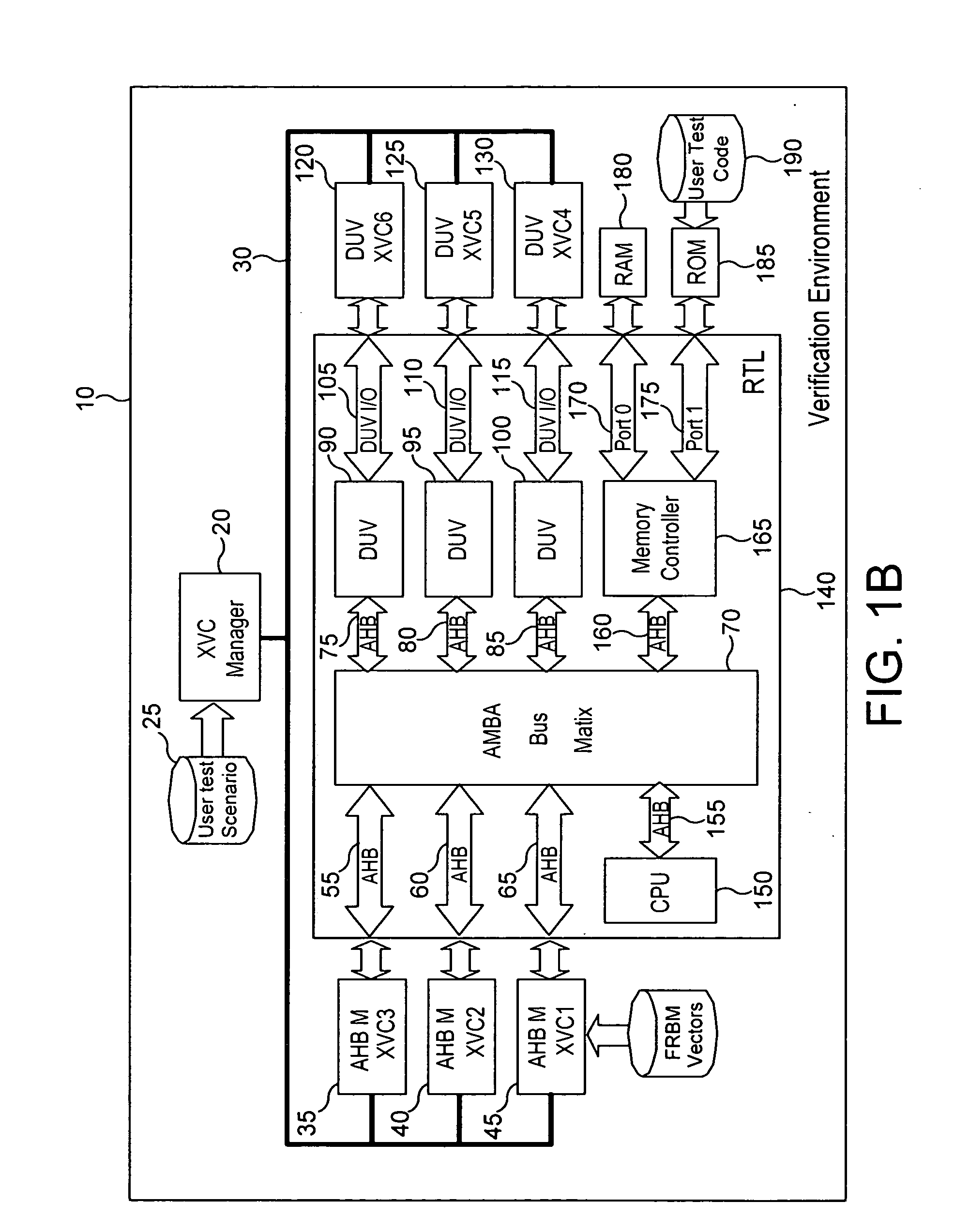Apparatus and method for performing hardware and software co-verification testing
a technology of hardware and software, applied in the field of apparatus and methods for performing hardware and software co-verification testing, can solve the problems of significant time elapse before the test software, no sequencing solution, and inability to execute arm assembler instructions, etc., and achieve the effect of flexible and efficient techniqu
- Summary
- Abstract
- Description
- Claims
- Application Information
AI Technical Summary
Benefits of technology
Problems solved by technology
Method used
Image
Examples
Embodiment Construction
[0060]FIG. 3 is a block diagram illustrating an apparatus for performing hardware and software co-verification in accordance with a first embodiment of the present invention. By comparison with the earlier described prior art of FIG. 1B, it can be seen that the same reference numerals have been used for those elements that are the same as described earlier with reference to FIG. 1B, and those elements operate in the same manner as described earlier with reference to FIG. 1B. By comparison of FIG. 3 with FIG. 1B, it can be seen that the verification environment 10 of the first embodiment of the present invention now additionally includes a debugger 310 and an associated debugger signal interface controller 300 which is coupled to the test manager 20 via path 30. In the particular example illustrated in FIG. 3, the debugger is an ARM RealView Debugger (RVD) and the debugger signal interface controller is accordingly an RVD signal interface controller, also referred to herein as an RVD...
PUM
 Login to View More
Login to View More Abstract
Description
Claims
Application Information
 Login to View More
Login to View More - R&D
- Intellectual Property
- Life Sciences
- Materials
- Tech Scout
- Unparalleled Data Quality
- Higher Quality Content
- 60% Fewer Hallucinations
Browse by: Latest US Patents, China's latest patents, Technical Efficacy Thesaurus, Application Domain, Technology Topic, Popular Technical Reports.
© 2025 PatSnap. All rights reserved.Legal|Privacy policy|Modern Slavery Act Transparency Statement|Sitemap|About US| Contact US: help@patsnap.com



